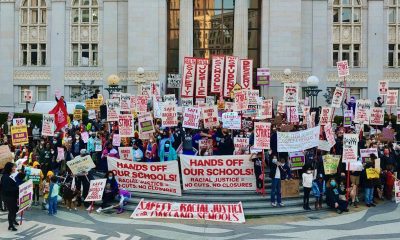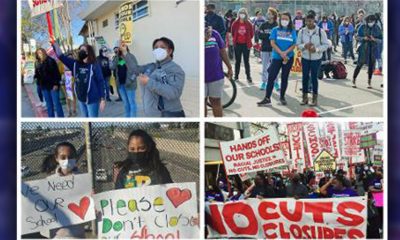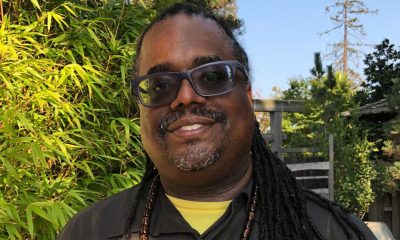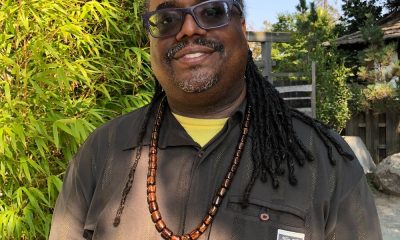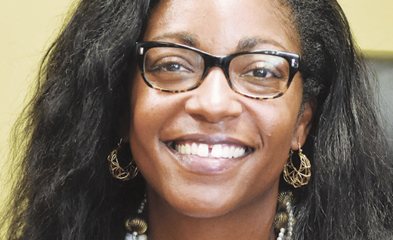Education
New Oakland Teacher Union President Keith Brown Seeks Parent, Community Unity
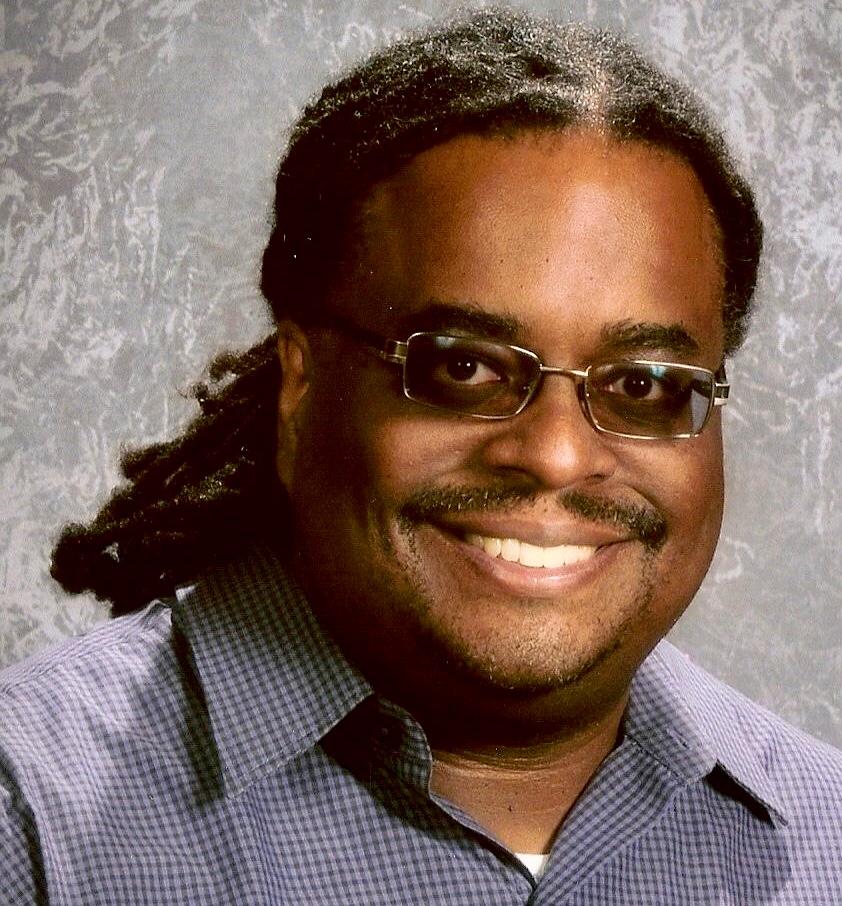
Keith Brown, Oakland’s newly elected teacher union president, is still cleaning out his classroom at Bret Harte Middle School as he prepares to take the helm of the 2,700-member teachers union, the Oakland Education Association (OEA).
Brown, until recently vice president of the OEA, is a 19-year veteran teacher in Oakland, including 12 years at Bret Harte. A lifelong Oakland resident, he grew up in the city’s public school system, attending Hawthorne Elementary, Bret Harte Junior High and Skyline High.
When he takes office on July 1, he will be joined by teacher leaders who were elected as part of his team: Ismael “Ish” Armendariz, special education teacher at Edna Brewer Middle; Tuwe Mehn, early childhood teacher; Jasmene Miranda, director of the Media Academy at Fremont High; and Jennifer Brouhard, fifth-grade teacher at Glenview Elementary.
In an interview last week on Radio Station KPFA, Brown discussed his program for change, including “bargaining for the common good” and supporting “organic teacher leadership” at school sites, which he believes are necessary for the union to effectively respond to local, state and national challenges threatening the city’s public schools and the well-being of Oakland families and community.
“One of the (key) points on our platform was to join with our families and communities in campaigns for access to quality jobs, affordable housing, safe neighborhoods, healthcare and social services,” Brown said.
In “bargaining for the common good,” parent and community leaders will become “part of the union’s expanded bargaining team, where negotiations with the district are not only about salaries, working conditions and health benefits (but) also about…the common good of the community,” he said.
This innovative approach is already being implemented by teachers in St. Paul, Minnesota and Sacramento, he said.
In Sacramento, the union, in partnership with communities of color and faith-based organizations, was able to win significant funding for restorative justice programs in classrooms, moving away from the “zero tolerance” approach to discipline that fuels the school-to-prison pipeline, he said.
In St. Paul, teachers “aligned with groups such as Black Lives Matter, participating in protests against the tragic murder of Philando Castile,” a school employee who was killed by a police officer on July 6, 2016, he said.
“There is so much potential in Oakland,” said Brown, pointing out that the OEA already has strong ties with many community groups, such as Alliance of Californians for Community Empowerment (ACCE), Oakland Parents Together (OPT) and Justice for Oakland Students (J4OS).
“Now is the time to really strengthen those relationships, moving beyond the teachers union having a transactional relationship with community organizations and parents, rather to have a transformative, authentic relationship where we’re working together and fighting for the things that are going to make our Oakland community a much better place to live,” said Brown.
He said his leadership team is also committed to supporting strong site “organic” leaders who are among the best teachers at their schools and who other educators seek out advice on how to improve their teaching.
“There are a lot of excellent teachers in the public schools,” Brown said. “We really need to be in the driver’s seat, having some teacher-driven professional development, (so) our union becomes a space for our educators to come present new ideas, to collaborate.”
“Of course, there are teachers who need extra support, extra mentorship,” he said. “It is our role as a union to provide those teachers with support so they can get better. It’s about improving outcomes for students.”
“Our role is to provide due process for all of our members, as a right that every worker should have—public school teachers or any worker,” he said.
Looking at current negotiations with the Oakland Unified School District (OUSD), where the OEA has been negotiating for 18 months without a contract, he said:
While the school district continues to face financial difficulties, “there is money there to settle a contract with Oakland teachers that prioritizes students, reducing class sizes, giving teachers a living wage. There is money, but that has to be made a priority,” he said.
“But for the transformative change that we really need to have outstanding public schools, we need to come together, collectively,” he said.
“We live in California, the fifth largest economy in the world. However, we are 46th in per pupil spending,” said Brown.
Activism
California Holds the Line on DEI as Trump Administration Threatens School Funding
The conflict began on Feb. 14, when Craig Trainor, acting assistant secretary for civil rights at the U.S. Department of Education (DOE), issued a “Dear Colleague” letter warning that DEI-related programs in public schools could violate federal civil rights law. The letter, which cited Title VI of the Civil Rights Act and the 2023 Supreme Court ruling in Students for Fair Admissions v. Harvard, which ended race-conscious admissions, ordered schools to eliminate race-based considerations in areas such as admissions, scholarships, hiring, discipline, and student programming.

By Joe W. Bowers Jr
California Black Media
California education leaders are pushing back against the Trump administration’s directive to dismantle diversity, equity, and inclusion (DEI) programs in its K-12 public schools — despite threats to take away billions in federal funding.
The conflict began on Feb. 14, when Craig Trainor, acting assistant secretary for civil rights at the U.S. Department of Education (DOE), issued a “Dear Colleague” letter warning that DEI-related programs in public schools could violate federal civil rights law. The letter, which cited Title VI of the Civil Rights Act and the 2023 Supreme Court ruling in Students for Fair Admissions v. Harvard, which ended race-conscious admissions, ordered schools to eliminate race-based considerations in areas such as admissions, scholarships, hiring, discipline, and student programming.
According to Trainor, “DEI programs discriminate against one group of Americans to favor another.”
On April 3, the DOE escalated the pressure, sending a follow-up letter to states demanding that every local educational agency (LEA) certify — within 10 business days — that they were not using federal funds to support “illegal DEI.” The certification requirement, tied to continued federal aid, raised the stakes for California, which receives more than $16 billion annually in federal education funding.
So far, California has refused to comply with the DOE order.
“There is nothing in state or federal law that outlaws the broad concepts of ‘diversity,’ ‘equity,’ or ‘inclusion,’” wrote David Schapira, California’s Chief Deputy Superintendent of Public Instruction, in an April 4 letter to superintendents and charter school administrators. Schapira noted that all of California’s more than 1,000 traditional public school districts submit Title VI compliance assurances annually and are subject to regular oversight by the state and the federal government.
In a formal response to the DOE on April 11, the California Department of Education, the State Board of Education, and State Superintendent of Public Instruction Tony Thurmond collectively rejected the certification demand, calling it vague, legally unsupported, and procedurally improper.
“California and its nearly 2,000 LEAs (including traditional public schools and charter schools) have already provided the requisite guarantee that its programs and services are, and will be, in compliance with Title VI and its implementing regulation,” the letter says.
Thurmond added in a statement, “Today, California affirmed existing and continued compliance with federal laws while we stay the course to move the needle for all students. As our responses to the United States Department of Education state and as the plain text of state and federal laws affirm, there is nothing unlawful about broad core values such as diversity, equity and inclusion. I am proud of our students, educators and school communities who continue to focus on teaching and learning, despite federal actions intended to distract and disrupt.”
California officials say that the federal government cannot change existing civil rights enforcement standards without going through formal rule-making procedures, which require public notice and comment.
Other states are taking a similar approach. In a letter to the DOE, Daniel Morton-Bentley, deputy commissioner and counsel for the New York State Education Department, wrote, “We understand that the current administration seeks to censor anything it deems ‘diversity, equity & inclusion.’ But there are no federal or State laws prohibiting the principles of DEI.”
Activism
Asm. Corey Jackson Proposes Safe Parking for Homeless College Students Sleeping in Cars
Assemblymember Corey Jackson (D-Moreno Valley), a member of the California Legislative Black Caucus (CLBC), is the author of AB 90, which would require community colleges and California State University campuses to create overnight parking programs where students can sleep safely in their vehicles. With one in four community college students in California experiencing homelessness in the past year, Jackson says the state must act urgently.

By Bo Tefu
California Black Media
As California’s housing crisis continues to impact students, new legislation, Assembly Bill (AB) 90, promises to allow college students without stable housing to sleep in their cars on campus, offering a stark but practical solution aimed at immediate relief.
Assemblymember Corey Jackson (D-Moreno Valley), a member of the California Legislative Black Caucus (CLBC), is the author of AB 90, which would require community colleges and California State University campuses to create overnight parking programs where students can sleep safely in their vehicles. With one in four community college students in California experiencing homelessness in the past year, Jackson says the state must act urgently.
“This just deals with the harsh realities that we find ourselves in,” he said at a recent hearing.
The bill passed its first committee vote and is gaining attention as housing affordability remains a top concern across the state. California rents are more than 30% above the national average, and long waitlists for student housing have left thousands in limbo. CSU reported more than 4,000 students on its housing waitlist last year.
Supporters stress that the bill is not a long-term solution, but a humane step toward helping students who have no other place to go. A successful pilot program at Long Beach City College has already shown that safe, supervised overnight parking can work, giving students access to restrooms, Wi-Fi, and a secure environment.
However, the CSU and community college systems oppose the bill, citing funding concerns. Critics also worry about safety and oversight. But Jackson and student advocates argue the crisis demands bold action.
“If we know students are already sleeping in their cars, why not help them do it safely?” said Ivan Hernandez, president of the Student Senate for California Community Colleges.
Activism
Newsom Fights Back as AmeriCorps Shutdown Threatens Vital Services in Black Communities
“When wildfires devastated L.A. earlier this year, it was AmeriCorps members out there helping families recover,” Gov. Newsom said when he announced the lawsuit on April 17. “And now the federal government wants to pull the plug? We’re not having it.”

By Bo Tefu
California Black Media
Gov. Gavin Newsom is suing the federal government over its decision to dismantle AmeriCorps, a move that puts essential frontline services in Black and Brown communities across California at risk, the Governor’s office said.
From tutoring students and mentoring foster youth to disaster recovery and community rebuilding, AmeriCorps has been a backbone of support for many communities across California.
“When wildfires devastated L.A. earlier this year, it was AmeriCorps members out there helping families recover,” Newsom said when he announced the lawsuit on April 17. “And now the federal government wants to pull the plug? We’re not having it.”
The Department of Government Efficiency (DOGE) under the Trump administration is behind the rollback, which Newsom calls “a middle finger to volunteers.”
Meanwhile, Newsom’s office announced that the state is expanding the California Service Corps, the nation’s largest state-run service program.
AmeriCorps has provided pathways for thousands of young people to gain job experience, give back, and uplift underserved neighborhoods. Last year alone, over 6,000 members across the state logged 4.4 million hours, tutoring more than 73,000 students, planting trees, supporting foster youth, and helping fire-impacted families.
The California Service Corps includes four paid branches: the #CaliforniansForAll College Corps, Youth Service Corps, California Climate Action Corps, and AmeriCorps California. Together, they’re larger than the Peace Corps and are working on everything from academic recovery to climate justice.
“DOGE’s actions aren’t about making government work better. They are about making communities weaker,” said GO-Serve Director Josh Fryday.
“These actions will dismantle vital lifelines in communities across California. AmeriCorps members are out in the field teaching children to read, supporting seniors and helping families recover after disasters. AmeriCorps is not bureaucracy; it’s boots on the ground,” he said.
-

 Activism4 weeks ago
Activism4 weeks agoOakland Post Endorses Barbara Lee
-

 Activism3 weeks ago
Activism3 weeks agoOakland Post: Week of April 2 – 8, 2025
-

 #NNPA BlackPress3 weeks ago
#NNPA BlackPress3 weeks agoTrump Profits, Black America Pays the Price
-

 Activism2 weeks ago
Activism2 weeks agoOakland Post: Week of April 9 – 15, 2025
-

 #NNPA BlackPress3 weeks ago
#NNPA BlackPress3 weeks agoHarriet Tubman Scrubbed; DEI Dismantled
-

 #NNPA BlackPress3 weeks ago
#NNPA BlackPress3 weeks agoTrump Targets a Slavery Removal from the National Museum of African-American History and Culture
-

 #NNPA BlackPress3 weeks ago
#NNPA BlackPress3 weeks agoLawmakers Greenlight Reparations Study for Descendants of Enslaved Marylanders
-

 #NNPA BlackPress3 weeks ago
#NNPA BlackPress3 weeks agoNew York Stands Firm Against Trump Administration’s Order to Abandon Diversity in Schools

